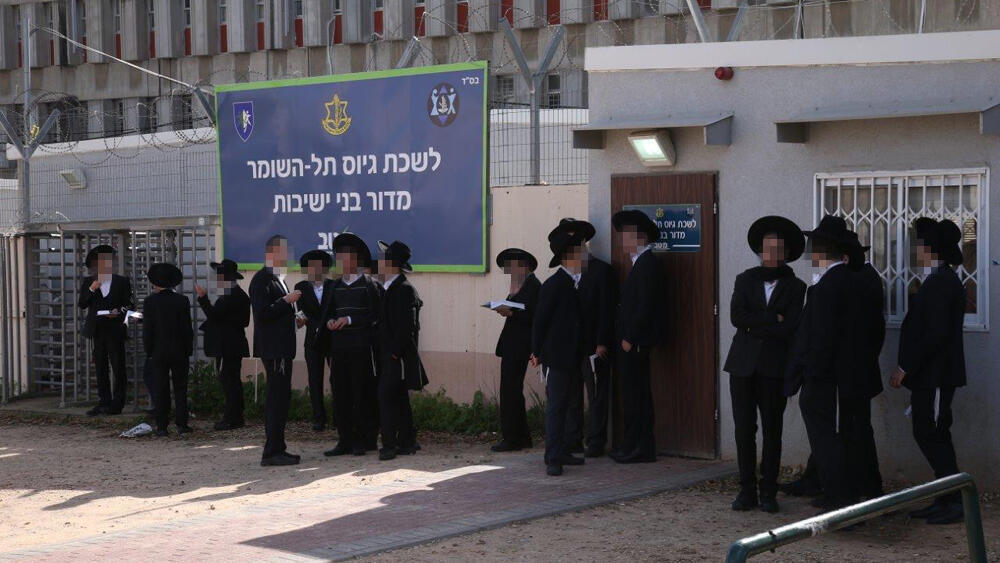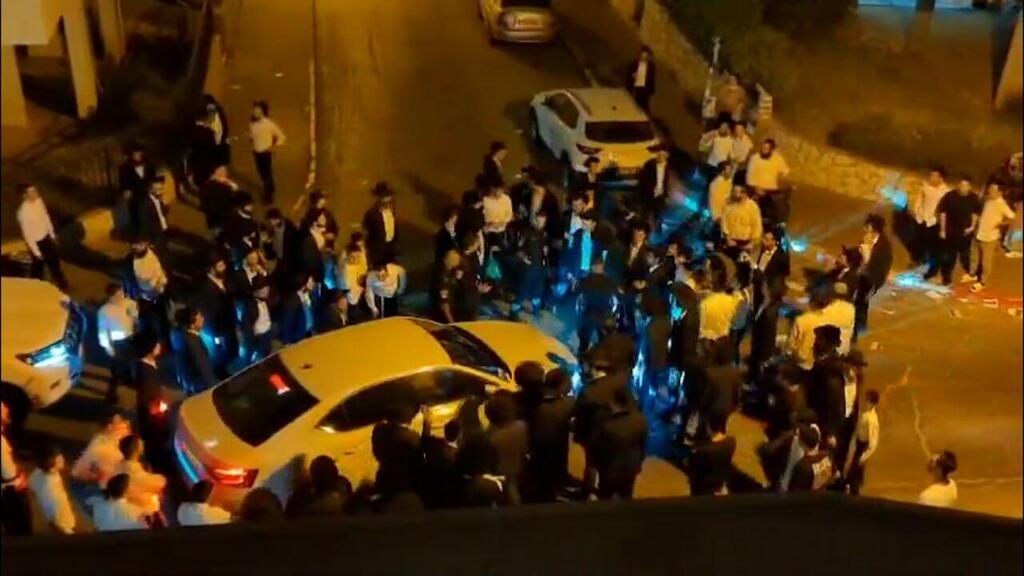Draft orders will be sent this week to approximately 1,000 ultra-Orthodox young men of conscription age. Those ultra-Orthodox men will be asked to attend the tzav rishon (first order) procedure at the recruiting offices. The IDF is trying to avoid a confrontation with ultra-Orthodox society and set up a screening process in which it tried to identify the Haredi men that would we the easiest to draft.
Those identified by the IDF as potential draftees include men who receive a paycheck indicating that he works and does not spend most of his time in yeshiva, men who own a smartphone, and men who were not present in a yeshiva during attendance audits taken by the Religious Services Ministry.
Despite these attempts, the spiritual leadership of the ultra-Orthodox sector is not accepting the move. In the Haredi-oriented Yated Ne'eman newspaper, a cartoon appeared on Friday in which conscription orders are seen being thrown into a trash can inside a yeshiva, while the students sit in front of an open Talmud, a visual interpretation of the instruction of the Lithuanian Haredi rabbis, led by Rabbi Dov Lando, that yeshiva students should not report for conscription into the IDF.
In recent days, the rabbis of the Shas Torah Sages Council have also joined the no-show order, and published a letter which reads: "As of now, when a new law regulating the status of Yeshiva members has not yet been settled, one must not obey any conscription or draft order, not even a tzav rishon (first order), and therefore one must not show up at all in the recruitment bureaus."
Shas rabbis also added that "there are elements, led by the High Court of Justice and legal officials, who are working to harm the world of Torah and harm the people of Torah, and therefore it is incumbent upon us now to stand firm, and to make it clear to those people and to the world that there is no power in the world that can succeed, God forbid, in disconnecting the Torah scholars from the Talmud."
Those who did not join the message are the rabbis of the major Hasidic movements in Israel, the rebbes of Gur, Belz and Vizhnitz movements. The three did not sign such letters, and even told those who consulted them that at this stage an ultra-Orthodox youth who receives a tzav rishon should go to the recruiting office so as not to quarrel with the army, and later they will examine how the exemption for those studying in yeshiva should be maintained.
Another voice that heard in recent days is that of Rabbi Dovid Leibel, head of the Achvas Torah kollel network, who in recent years has been trying to create customized tracks for the ultra-Orthodox in the army. A demonstration of ultra-Orthodox protesters took place around his house last week after discovering that he was meeting there with senior army officers to discuss drafting young ultra-Orthodox men.
Leibel also delivered a lesson to his students in which he opposed the militant spirit of the Haredi rabbis, saying: "In the long run, our entire sector will have to make some sort of arrangement, it is impossible to live in the country and shake hands with the government, the army, and the law and see who will blink first."
The rabbi also referred to the opinion of some in the ultra-Orthodox sector who say they do not enlist because they are not part of the state, which they do not recognize. Those Haredim believe that the exile is not over yet, until the coming of the Jewish Messiah. The rabbi said: "We sat in exile with the Zionists, so now we should behave like we did in exile, bow our heads before the landowners, not go drunk and shout 'We run the country'."
The IDF had difficulty estimating how many young people would ultimately respond to the first draft notice. The first 3,000 orders that were decided upon in the security establishment will be distributed by the IDF in three batches, each two weeks apart.
Brigadier General Shay Taib this week justified the decision to act this way, saying "This is a population that we have essentially zero data on. If you ask me how many of the general population will come forward, I know how to pull out a figure that will be close to reality. This is a population for which we have no data and I cannot estimate how many will come in. After one round, we will have two weeks of learning and improvement, another round and another improvement procedure."



